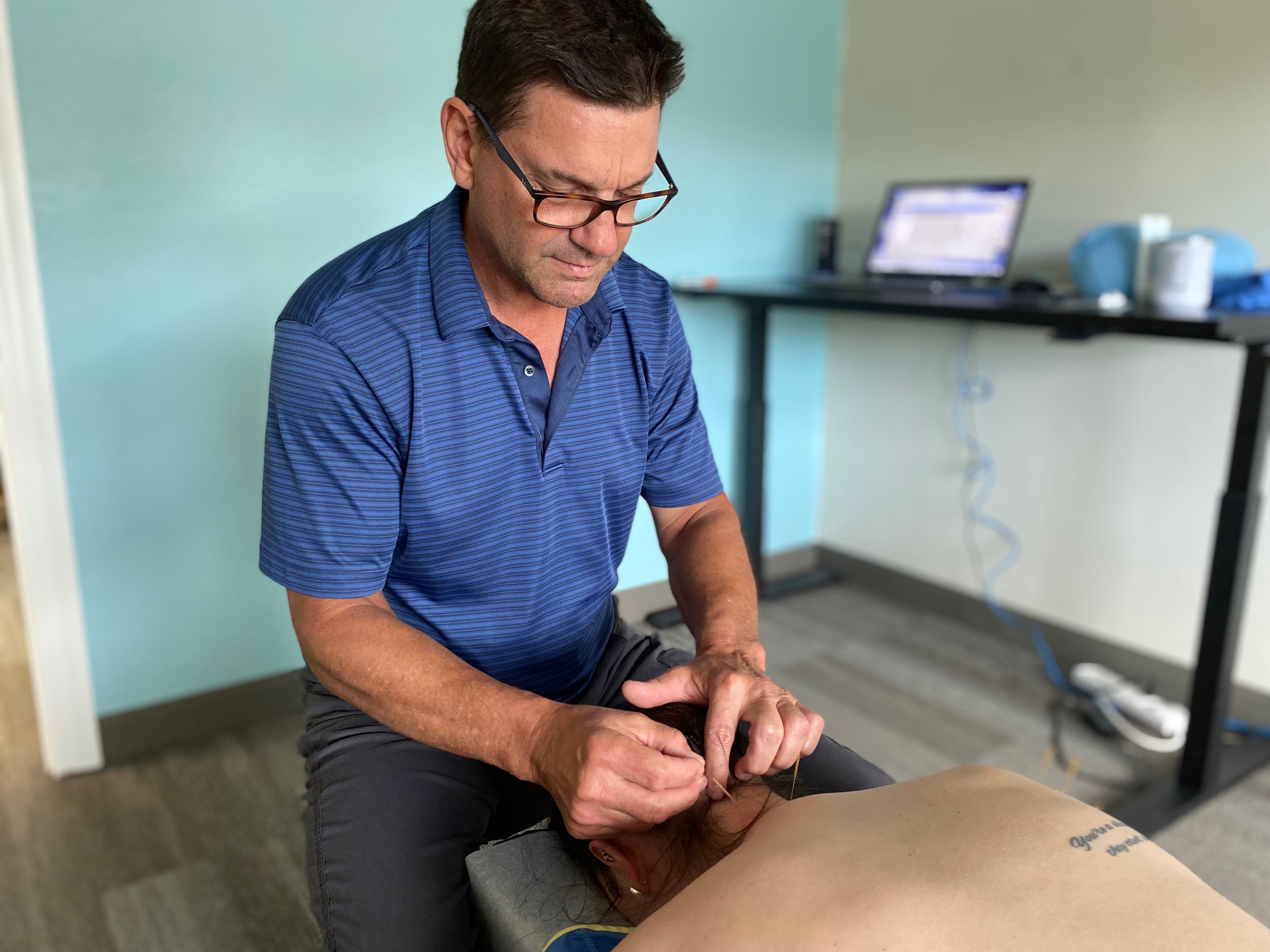Dry Needling FAQs
Read the Frequently Asked Questions About Dry Needling
There is often confusion between dry needling and acupuncture. Here you will find the most common FAQs about the treatment so you know what to expect.
What is dry needling used for?
Dry needling is used to treat pain, increase range of motion, and relieve other neuromuscular or musculoskeletal issues. Areas that are treated may be muscles, tendons, ligaments, scars and even bone surfaces. Your chiropractor will evaluate your body and create a treatment plan unique to your health goals.
Is dry needling like acupuncture?
Dry Needling is similar to acupuncture in the sense that acupuncture needles are used. We use acupuncture needles because they are solid and typically smaller than hypodermic needles, which makes for less discomfort for the patient and a significantly reduced risk of infection.
But Dry Needling is not acupuncture. Acupuncture attempts to balance energy meridians by inserting the needles into a mapped set of acupuncture points. Dry needling examines a patient, to feel for trigger points that are like nodules or knots in the muscle. Then the doctor uses needles to get the precise depth and angle of the issue or “blockage”.
Does dry needling hurt?
The places where the dry needles are placed are often already tender. Most patients describe the needle insertion as a dull ache, like a toothache, and is well tolerated by most people. Exceptionally fine needles are used, and they are inserted with a small tube that minimizes the sharp stab of the needle entry that is expected by most patients.
What results can I expect from dry needling?
Dry needling enhances everything your body naturally does to heal. Dry needling unblocks pathways from your body to your brain and speeds up the overall healing process. Chemicals are released in response to the needle. Nerve impulses are stimulated that travel to the spine first, then to the brain. The brain in turn releases its own chemicals and it sends nerve impulses back down the spine. You can expect relief in whatever area you were suffering. For example, if you have pain, your pain will be reduced or eliminated; if you are struggling with range of motion in your shoulder, you will see increased movement.

What types of side effects should I expect after a dry needling treatment?
Side effects are generally mild and minimal. You may experience bruising or bleeding, fatigue or tiredness, skin irritations, soreness, dizziness, or feeling faint.
What does dry needling feel like?
Around each needle insertion point there is a dull ache that goes away rather quickly. Often patients feel relaxation and warmth in the surrounding tissue or even in other parts of their body.
Why are there different sized needles?
We try to make dry needling as comfortable as possible, however in some cases, the tissue that needs treatment is not close to the surface. So different sized needles are needed to reach all the way to the part of the body that needs help and healing.
How often should I get dry needling?
This will be up to your doctor and your specific treatment plan, but most patients see significant relief or improvement in two to four treatments.

